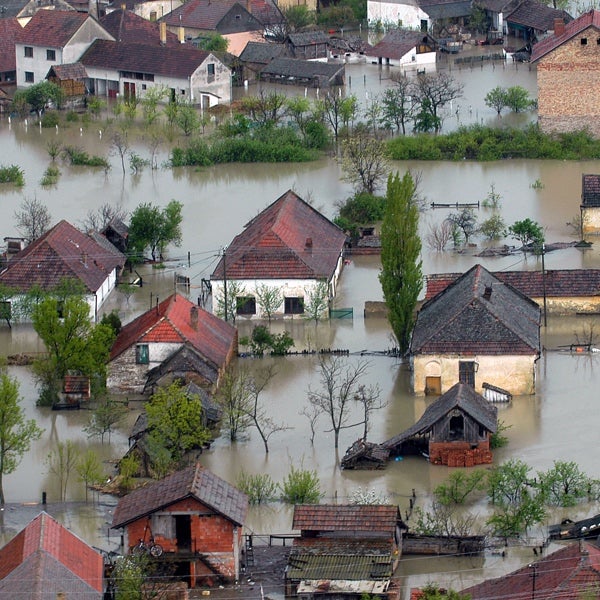Looking at my twenty-five years of leading catastrophe modeling and exposure management teams, in my experience, the insurance industry has primarily focused its attention on what is regarded as ‘primary' perils, namely tropical cyclones and earthquakes.
This focus on these two perils is with good reason. Catastrophic events like Hurricanes Andrew (1992), Katrina (2005), and Ian (2022) and the Tōhoku earthquake and tsunami in 2011, all caused significant market losses and even insurer survival in some cases.
I recall that the first Realistic Disaster Scenarios introduced by Lloyd’s in 1995 were likewise focused on these primary perils. Other less loss-generating perils were deemed 'secondary’ and were often overshadowed and overlooked.
These secondary perils are commonly defined as either producing small to mid-sized loss events or are perils that follow on as a secondary effect of a primary peril – such as flooding, wildfires, tornadoes, hailstorms, and tsunamis.
In the past decade, however, the catastrophe risk landscape has undergone significant changes. The insurance industry has witnessed a significant increase in losses from secondary perils which have also been exacerbated by factors such as exposure spread, climate change, and economic development.
These once 'secondary’ perils have therefore moved into the spotlight, and their financial impact on insurers and reinsurers has grown significantly.
Death by a Thousand Cuts
It is largely true that while individual secondary events do not on their own cause significant industry-altering losses, their cumulative effect has led to alarming levels of loss for many (re)insurers.
In a situation reminiscent of a 'Death by a Thousand Cuts' scenario, numerous small events have had an enormous collective impact.
Some secondary events have led to their own multi-billion dollar losses such as the U.S. wildfires in 2018, and the 2021 flooding in western and central Europe. This raises the question of whether the industry should rethink the term 'secondary.'
According to a Gallagher Re report, during 2022, ‘… secondary perils were again the most expensive on an economic basis and exceeded those on the insured loss side.’
Estimating total insured losses of US$140 billion for 2022, the report stated that primary perils comprised US$67 billion (48 percent) of this total, with secondary perils making up the majority of losses at US$73 billion (52 percent).
Given the significant risk posed by these perils, this 'secondary' label now seems increasingly dismissive. Reconsidering the terminology could promote an enhanced appreciation and understanding of these risks, reflecting the true scope of their potential impact.
The Emerging Threat: Earning Perils
Catastrophe risk models have been in use for thirty-plus years and as computing power has grown substantially together with technological advances over recent years, the level of granularity required to accurately model high-gradient perils like floods, severe convective storms, and wildfires has now brought secondary perils into clearer focus. This has also helped to underline the threat they pose to earnings.
Looking at business earnings, they are typically calculated as revenues less expenses, interest, and taxes. For a (re)insurer, simplistically, earnings are premiums collected on insurance policies (revenue) less claims paid out (expenses).
While there are other expenses such as IT and human capital, these are typically smaller and much easier to plan for and predict. In contrast, outsized catastrophic losses and subsequent claims paid out are subject to much greater volatility for (re)insurers.
Importance of Managing Earnings Risk
When firms consistently struggle to meet their cost of capital it raises concern among shareholders and board members.
Executives will question whether a firm understands both large-scale catastrophes and these risks that will erode year-over-year earnings, often driven by smaller, more frequent events from secondary perils.
This erosion of earnings represents a challenge known as earnings risk; a risk which is well understood within boardrooms but often not shared among practitioners involved in catastrophe management.
Earnings risk is inherently tied to loss volatility, with natural catastrophe risk one of the main drivers.
From a broader perspective, the volatility of (re)insurance earnings can be examined at a portfolio level and is often measured as a one-in-ten-year Annual Exceedance Probability (AEP) normalized to the premium.
One of the main challenges faced by the industry when dealing with secondary perils is their representation in risk models. Due to their unpredictable and localized nature, secondary perils are frequently linked to higher levels of under-insurance or coverage gaps, which can lead to significant disparities between insured and actual losses.
This lack of comprehensive modeling can result in a potential underestimation of losses, introducing unexpected earnings risk for (re)insurers.
In addition, the frequency of secondary peril events typically outpaces that of primary perils. As a result, (re)insurers face a more consistent stream of claims, exerting pressure on their earnings.
Secondary perils are also more vulnerable to the impact of macroeconomic changes such as increases in property exposure, inflation, and supply chain issues – further amplifying earnings risk for (re)insurers.
While a single secondary-peril-driven event should not exhaust a reinsurance program, an aggregation of events can significantly impact a reinsurer’s profitability.
This shift aligns with the notion that reinsurance is bought vertically for primary risks, like cyclones and earthquakes, but horizontally for secondary perils, protecting against the cumulative risk of frequent, smaller losses.
Also adding to the complexity is the relentless progression of a changing climate. As our planet continues to warm, secondary perils like wildfires, severe storms, and floods are not only becoming more frequent but are also intensifying.
An uptick in severe weather events can lead to an increased volume and magnitude of claims, impacting a (re)insurer’s profitability.
While primary perils typically produce industry-wide losses impacting large swathes of the market, it is secondary peril losses impacting selected (re)insurers that result in the C-suite asking why earnings or financial performance lag behind their peers.
So, perhaps now is the time to redefine ‘secondary perils’ as ‘earnings perils.’
The Role of Cloud-Based Catastrophe Modeling in Analyzing and Mitigating Risk
I should however note that the decision to classify a peril as an earnings peril or a primary peril will depend on a (re)insurer’s portfolio, given that a portfolio might have limited earthquake exposure but significant flood exposure.
Regardless, introducing the term ‘earnings perils’ underscores the significance of these risks and their potential impact on the profitability of a (re)insurer.
Measuring earnings perils poses a challenge that requires the use of risk models with a high level of detail, the ability to aggregate and measure correlation across multiple perils within the same event, and the capability to financially model complex policy terms and outwards reinsurance policies.
These capabilities provide underwriters with a more informed understanding of the frequency and severity of modeled perils.
With the availability of computing power through the cloud, firms can now more easily understand their 1-in-10 AEP and it is down to model vendors to ensure they can provide the necessary tools for firms to analyze and mitigate earnings risk effectively.
Moody's RMS offers its latest catastrophe modeling and exposure management applications through the Intelligent Risk Platform™, a cloud-native software as a service (SaaS) platform.
This suite of unified applications and high-definition risk models represent the next generation in resolution modeling, accounting for multi-peril and multi-region correlation.









